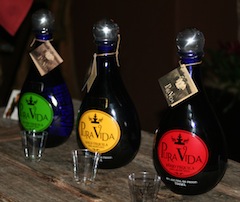Selo de Mar: reawakening a sleeping culinary giant
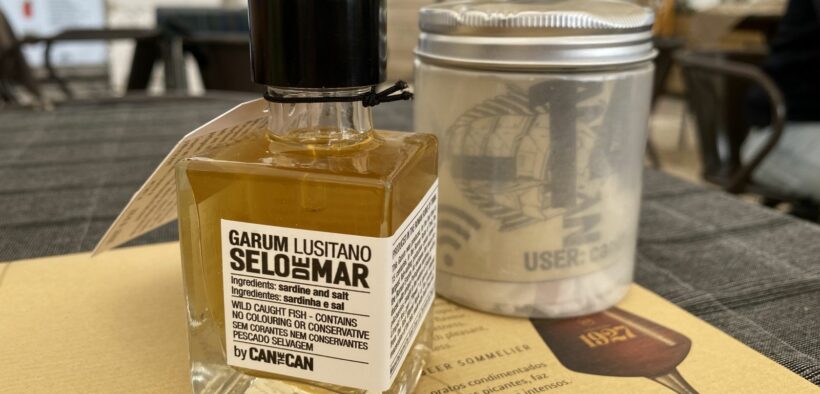
One thing that makes the dining scene in Portugal so exciting is the friendly push-and-pull between restaurants specializing in generations-old regional comfort food and contemporary chef-driven restaurants transforming old traditions into new dishes that are unrecognizable yet pleasing to all the senses. Lisbon’s Can the Can, the brainchild of researcher and designer Victor Moura Vicente and chef Pedro Almeida, has set itself apart by walking the line that separates the two.
Canned sardines and other fish and seafood, which have fed the Portuguese economy since the mid-19th century, provides the artistic medium upon which Can the Can’s menu has been built since its 2012 opening. In the 21st century, canned fish is an everyday kitchen staple in many European homes and has been reinvented as a colourful souvenir option—even sold in boutiques that look like upscale cosmetics or accessories shops at first glance. In the hands and imaginations of Almedia and Vicente, however, they continue to inspire refined and complex dishes as well as conversations about their potential as meat substitutes.
On a recent visit to Lisboa, Can the Can owners Vicente and Maria da Luz introduced me to some of the newest menu items, including fish-based charcuterie and dry tuna loin (upon which Can the Can’s version of pork belly is based) with strong but appealing flavours that nicely complemented hearty flatbreads or worked nicely on a bagel with fresh microgreens. While Victor and Maria have deftly converted new foodie fans to these “radical” new options since reopening after the pandemic, making those options viable was no easy task.
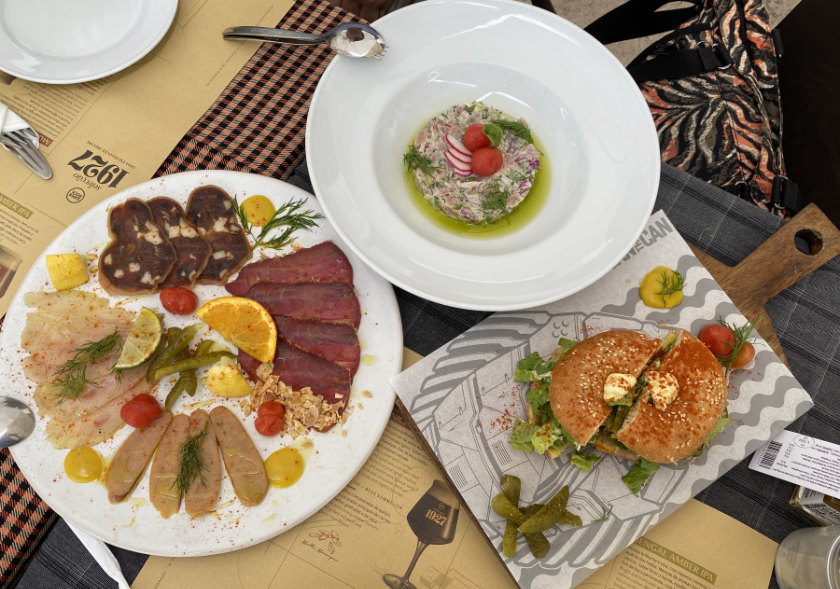
New and updated ways to enjoy Portugal’s seafood bounty, as interpreted by Can the Can, Lisboa.
‘Dry tuna loin (called Muxama) and tuna carpaccio are things we’ve been wanting to bring to the public, especially with customers wanting meat alternatives,’ explains Vicente. ‘However, when the last surviving Portuguese producer died, we faced the prospect of having to import it from Spain, which we did not want to do as we wanted to support Portuguese producers and the local economy. After a few experiments, we managed to create it, but we like to think of it as a “prosciutto” of tuna. From there, we started making a pastrami with local fish made with a similar process.’
Even with a bit of trial and error to get to the final formula (Maria says they found time for during the pandemic to accomplish this), Victor notes that to make fish have a ‘meaty’ feel, one would use the same dry ageing cabinets one would use to dry-age meat. The next step was figuring out how the kitchen could use swordfish to make a new version of matured fish belly, as well as botargas and chorizo. In spite of some restaurant critics describing these dishes as an acquired taste, the number of customers packing Can the Can’s outdoor patio on a Tuesday afternoon just before tourist season is testament to the fact people are looking for something new to experience, even if they happen to be very, very old.
Inside the gallery-like restaurant, what initially looks like a perfume display instead serves as an introduction to Selo de Mar, a precious golden liquid that, depending on your perspective, could be mistaken for a fragrance or a fine truffle oil. However, meticulous signage and brochures clarify that Selo de Mar wasn’t just smart merchandising. Instead, it’s a luxury condiment the couple believes may bring the Can the Can beyond Portugal. Not content to stop with the success in reinventing fish, the team moved on to garum, the precious oil on display. Victor and Maria explain garum was most famous and prized condiment during the Roman Empire.
Although garum was regarded the white truffle oil of its day, the couple pointedly explain it had very specific Portuguese roots where the Lusitanian territory stood during the Roman Empire. They also stress that through history, there were and are many expressions of garum, as the term has been ‘used to define a series of products of different composition and consistency, such as sauces and pastes obtained through fermentation in brine, through enzymes, part of fish or all of them.’
The pursuit grew into a major historic preservation project that prompted them to collaborate with archæologists as well as experts such as UK food historian Sally Granger, who studied garum and other recipes from the Roman era. The information she shared with them as well as that documented in her papers on the subject provided the foundation for a recipe that would capture the essence while adapting it for modern times and palates.
‘At the Roman ruins of Tróia, not far from Lisbon, archæologists found more than 200 tanks and 29 salting factories that produced tons of the pungent sauce that shaped Roman palates,’ details Victor. ‘It’s important to acknowledge that as the Roman period lasted about ten centuries, the substance changed over time, but was still garum. It is believed Tróia was the largest centre of production, and we asked some of the archæologists who uncovered the ruins to [help us find information for the recipe for the] garum, which they did. Next, we opened a small lab to experiment and recreate the ancient recipe. Now you’re going to taste it.’
Victor drops on some of the charcuterie, a salad and the bagel sandwich surprises in that it enhances the natural flavours of some of the ingredients rather than covers up or alters the dish’s flavours outright. He further details that this incarnation is made from tuna, swordfish, oysters, mackerel, and other locally sourced Portuguese fish in one of the fish salting tanks of this archæological complex.
‘It’s like making rain wine, because the sea where you get the fish from is your land, a vineyard where you cultivate the best things for your harvest,’ Victor continues. ‘The fish are like the grapes, and how they taste depends on what they are growing in and where they are grown. If you made a garum in Brazil, it would taste very different, as would a variation from Goa. When we believed we had the our formula, we sent a bottle over to Sally for her approval, and she told us it was the best recipe of Garum that she had ever tasted.’
Even with minimal promotion in Portugal and even less elsewhere, diligence and word of mouth has allowed the couple to find chefs and restaurateurs—especially in the western US—and sell a surprising amount of it. Fans include John Bergman, former CEO of World Class, a food distributor, as well as Nobuo Fukuda, the executive chef of Nobuo at Teeter House, a Japanese restaurant in Phoenix, Ariz. The feedback has focused on the fact that it is remarkably easy to use as well as versatile.
According to Victor, comments from chefs have ranged from, ‘You only need to add a few drops when cooking or preparing a dish,’ to ‘A few drops added to tuna tartare, grilled vegetables, and risotto takes whatever you’re making to new level.’
‘We have worked with World Class for a couple of years, with them visiting us in Lisbon and our visiting them in Arizona,’ he adds about his small mini oil boom. ‘John loves the product and is promoting us in the US among his chef and restaurateur colleagues. We hope to get into a larger US market, we’re going through paperwork with the FDA in order to sell it as a retail product. It’s a long and difficult process. John sells a lot [in] the US, and he spends a lot of time in Portugal looking to source the best wines, cheese, and other food products and exporting things as well. It’s a partnership with promise.’
Can the Can’s garum is available online, and is sold with or sent to the customer with instructions on the how-tos of integrating it into the modern kitchen and with a variety of cuisines. There are additional guidelines and recipes on the Can the Can website and the Selo de Mar project website. Victor then adds that American restaurant chefs, restaurateurs and hospitality business leaders are the best messengers to get word out because of their credibility among consumers who enjoy cooking and bartending.
‘It often gets likened to truffles or refined bitters, which can be added to a higher-end cocktail,’ he affirms with great enthusiasm. ‘The flavour of the oil itself is fairly subtle but can bring out other flavours in whatever it is added to. I even have had feedback that bartenders have tried it in cocktails, including one guy in Phoenix who used it in a recipe that won third place in a major competition. It’s also been touted by noted Arizona food writer Diana Brandt [Arizona Foodie].’
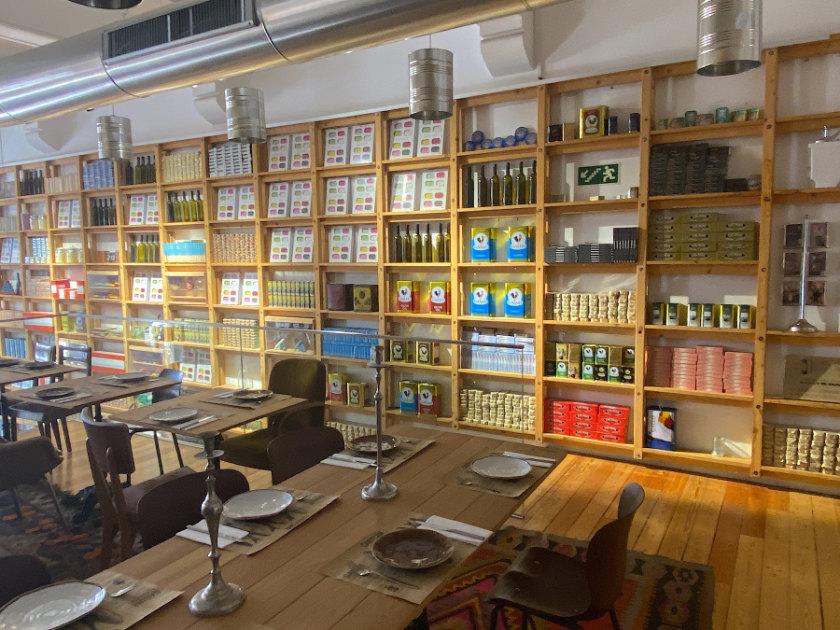
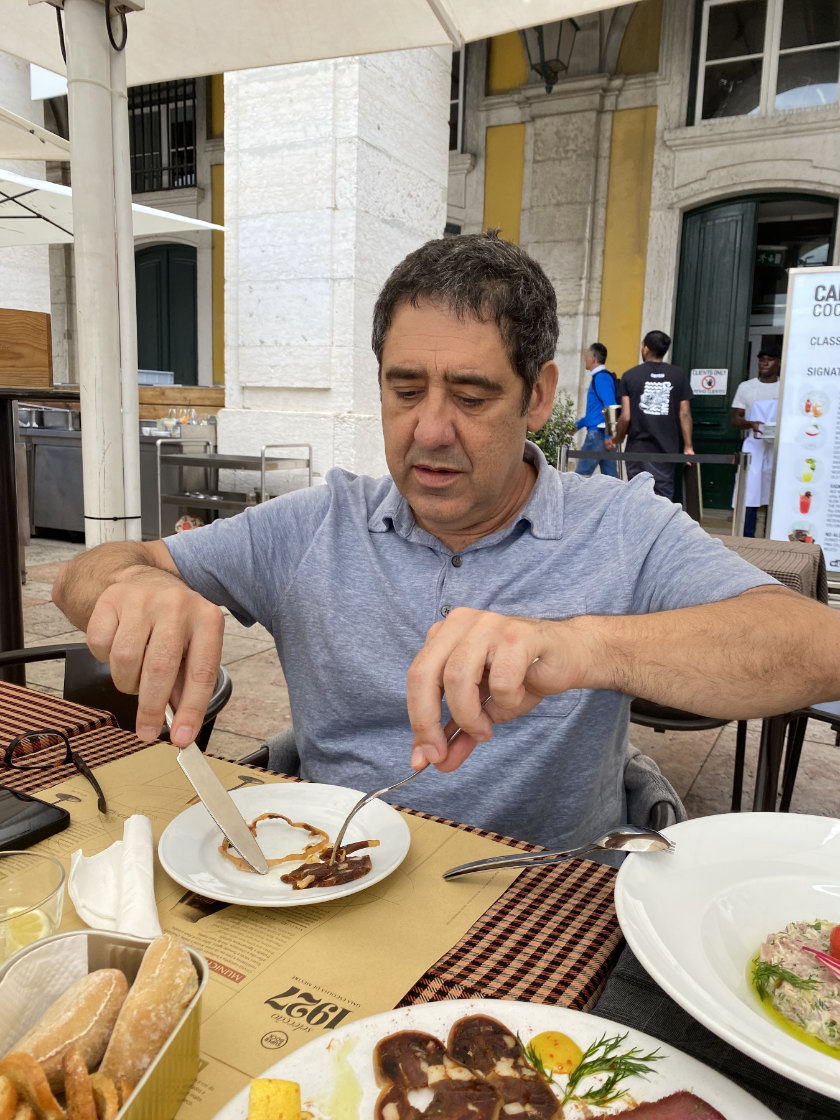
Can the Can’s interiors, and Victor Vicente enjoying some of the restaurant’s new offerings.
Cabbottarga
Serves 2
8·8 oz of fresh pasta
1 pack of bottarga
1 pack of swordfish belly (optional)
4·2 oz of cheese, finely grated
4 egg yolks
0·35 oz of spring onion, chopped
Salt, as needed
Black pepper, as needed
1. Put a pan of water and salt on the stove. When it boils, add the pasta and follow the cooking instructions indicated by the producer.
2. While the pasta is cooking, place the egg yolks, grated cheese, bottarga, salt and pepper in a large bowl.
3. With the help of a fork, crush the ingredients to a paste and set aside.
4. As soon as the pasta is cooked, add the pasta to the previous preparation and carefully mix it so that it does not break. You can add a little bit of the cooking water to make the sauce creamier.
5. Serve immediately and finish with swordfish belly strips and chopped fresh chives.
(Chef’s note: In addition to the Selo de Mar bottarga and barriga de espadarte pack, we used the products of local producers, Massa Fresca and I Am Cheese.)



